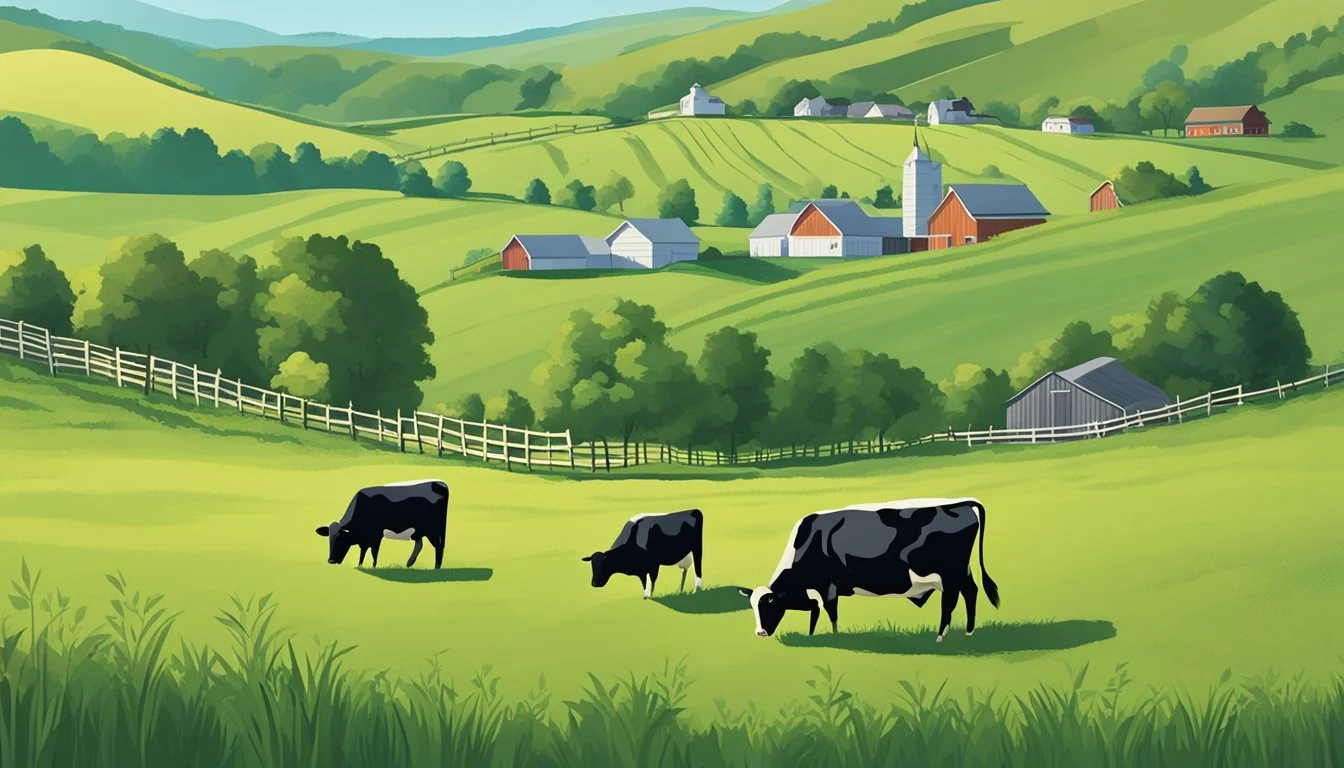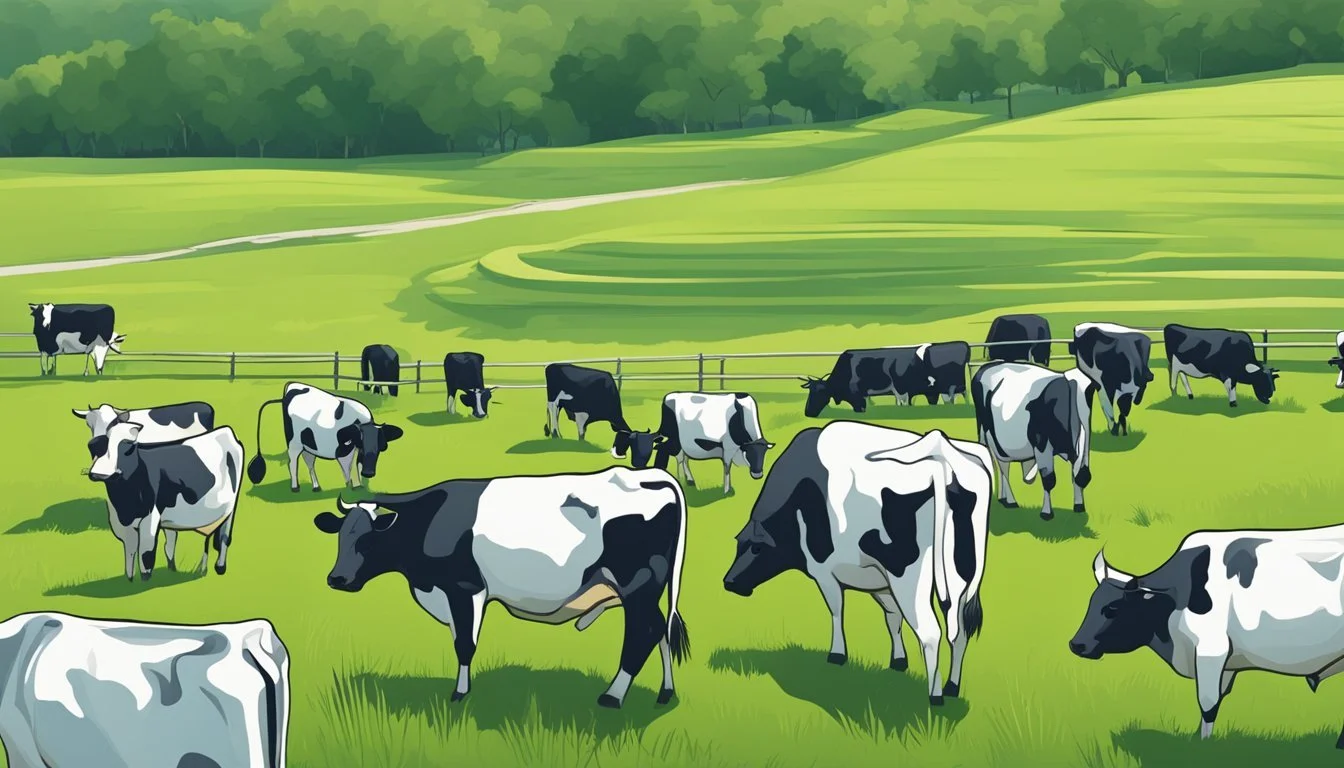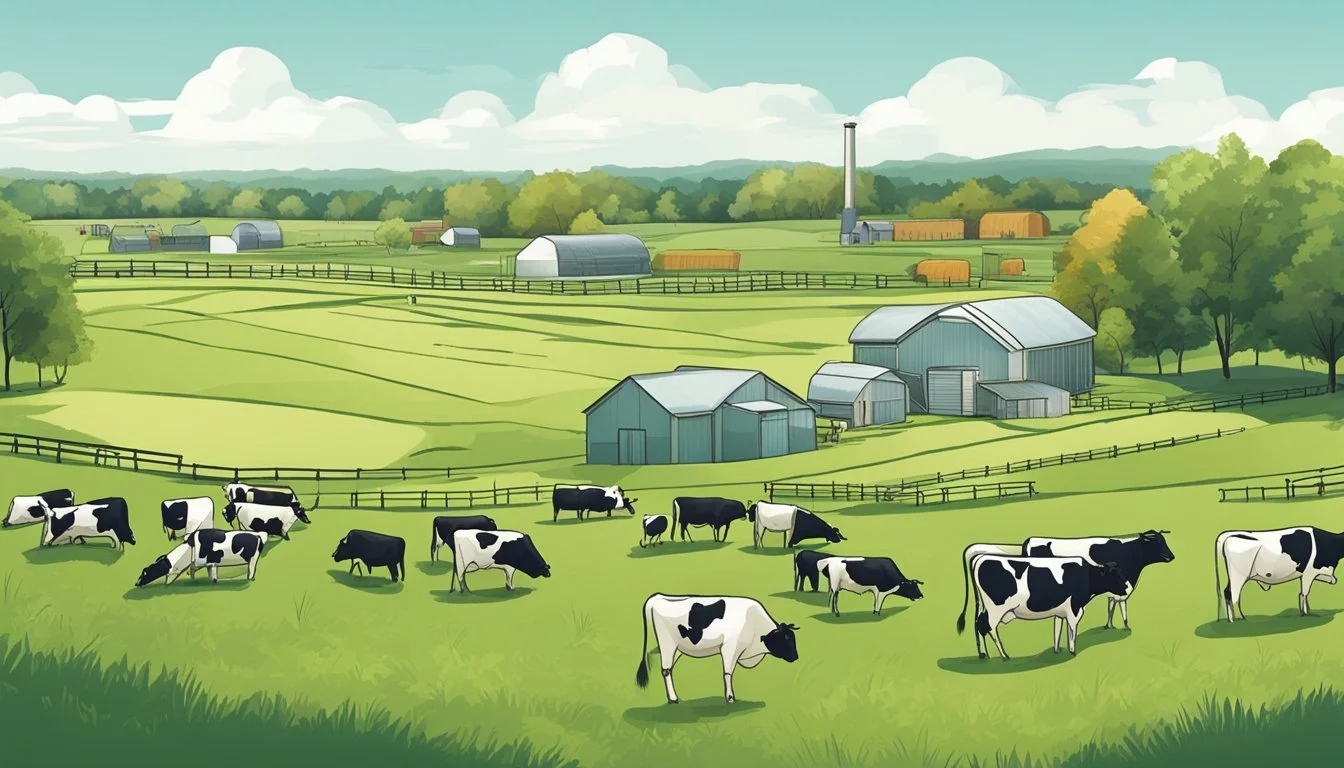Stocking Rate Indiana
Determining Your Land's Cow Capacity Per Acre
Determining the number of cows a property in Indiana can support is a critical aspect of sustainable farming practices. The concept of stocking rate, which refers to the number of livestock units that can be sustainably grazed on a given area of land, is rooted in the balancing act of livestock needs and the ecological capacity of the pasture. The stocking rate is influenced by variables such as forage availability, the nutritional requirements of the cattle, and the land management objectives of the owner.
In Indiana, the adoption of management-intensive grazing practices has shown to enhance forage production per acre, contributing to an optimal stocking rate. Effective management allows for natural weed and brush control, balanced manure distribution, and recovery time for paddocks to regrow. However, it is paramount that farmers monitor their pastures closely and adjust the number of cows per acre according to changes in forage quality and climate, as well as specific local conditions.
Understanding Stocking Rate
Stocking rate is a critical aspect of pasture management, directly influencing the health of the pasture and livestock productivity.
Defining Stocking Rate
Stocking rate is the number of animals per unit area of land over a specific time period. It's typically expressed in animal units (AU) per acre - an "animal unit" corresponding to a 1,000-pound cow with a 6-month-old calf.
Factors Affecting Stocking Rates
Several elements affect stocking rates, including pasture productivity, land size, and forage utilization. Factors such as climate, soil health, and forage type significantly influence pasture conditions and overall carrying capacity.
Calculating Stocking Rate
To calculate stocking rate, divide the total land area by the product of the number of animal units and the grazing season length:
Example: ( \text{Stocking Rate} = \frac{\text{Total Land Area (acres)}}{(\text{Number of AUs}) \times (\text{Grazing Season in months})} )
Stocking Rate Implications
The choice of stocking rate can lead to overgrazing, reduced forage production, and soil degradation or to improved pasture health, increased biodiversity, and greater profitability. Careful management ensures sustainable production and soil quality.
Stocking Rate Guidelines for Indiana
In Indiana, stocking rates are influenced by the local climate and type of grasses, which dictate forage yield and pasture health. The state’s annual precipitation plays a pivotal role in determining the appropriate stocking rate.
Natural Resources Conservation Service (NRCS) Insights
The NRCS provides guidance on optimal stocking rates, focusing on conservation and sustainable livestock management, to prevent issues such as soil degradation. Their recommendations consider local variations in forage production, climate, and soil health.
Regional Variations Within Indiana
Indiana exhibits regional climate differences, affecting pasture productivity and annual precipitation. Such regional variations warrant different stocking rates across the state, emphasizing the importance of location-specific grazing practices.
Grazing Management Strategies
The success of livestock operations in Indiana largely hinges on effective grazing management strategies. These strategies are designed to maximize forage utilization, maintain pasture health, and support the desired stocking rates throughout the grazing season.
Rotational Grazing Basics
Rotational grazing involves dividing larger pastures into smaller paddocks and moving livestock between them on a regular basis. This method allows forage in rest paddocks to recover, leading to improved pasture productivity and a higher stocking rate. A well-managed rotational system typically utilizes high density grazing for short periods, which can enhance forage consumption efficiency and forage quality.
Continuous Grazing Explained
Continuous grazing is where livestock have unrestricted access to a large pasture for the entire grazing season. Although this approach might require less labor, it tends to result in lower pasture utilization rates, uneven forage consumption, and the need for a lower stocking rate to prevent overgrazing. Proper management is crucial to avoid deterioration of pasture condition and to maintain consistent forage availability.
Multi-Species Grazing
Multi-species grazing incorporates different livestock types, such as beef cattle, dairy cows, and chickens, each utilizing different plant species, which helps improve biodiversity and pest control. This grazing strategy can lead to better forage quality and quantity due to varying grazing behaviors and forage consumption patterns. The combined effect often results in a more efficient system, potentially boosting overall stocking rates.
Managing Forage Quality and Quantity
Effective forage management prioritizes maintaining the forage in a vegetative state for as long as possible to sustain both forage quality and quantity. Implementing a fertility program tailored to the forage production plan, and adjusting stocking rates based on measured forage availability are vital components. Regular monitoring is the key to adapting the grazing practice to prevailing conditions, ensuring sustainable pasture usage.
Livestock Considerations
Determining the suitable stocking rate in Indiana requires a thorough understanding of livestock needs and the carrying capacity of the land. This section delves into specifics surrounding various types of livestock and how to properly calculate and manage their presence on a property.
Impact of Livestock Type on Stocking
Different types of livestock have distinct spatial and nutritional requirements. Beef cattle may require more space than dairy cattle, due to differences in breed characteristics and overall management strategies. For example, meat-producing breeds often have higher forage demand compared to dairy breeds. Understanding the specific needs of each livestock type is paramount to prevent overgrazing and maintain sustainable stocking rates.
Calculating Animal Unit Equivalents
The concept of Animal Unit Equivalents (AUE) is essential for stocking rate calculations. A standard Animal Unit (AU) typically represents a 1000-pound cow. Larger breeds or those with higher forage consumption will have higher AUEs. Calculations may look as follows:
Cow size: 1200 lbs, AUE: 1.2 AU
Cow size: 1000 lbs, AUE: 1.0 AU
Assessing the AU of the livestock allows for precise stocking rate evaluations and comparisons.
Assessing Forage Demand by Livestock
Forage demand is dictated by the type, size, and number of livestock. In Indiana, forage availability can vary, influencing how many cows per acre can be supported. Livestock such as beef cattle and dairy cattle not only have different sizes but also different forage quality and quantity requirements which must be accounted for when determining the appropriate stocking rate.
Livestock Health and Nutrition
Maintaining cattle health is critical, necessitating a balance between livestock numbers and available resources. Adequate forage alongside necessary supplements ensures livestock receive proper nutrition, which is especially important when forage quality is inconsistent. Overstocking can lead to inadequate nutrition and heightened disease risk, underscoring the importance of correct stocking.
Grazing Days and Harvest Efficiency
Grazing days and harvest efficiency relate to the duration livestock can graze on a pasture and the amount of forage they can consume without depleting resources. Maximizing harvest efficiency involves strategic planning to align grazing periods with peak forage production, ensuring consistent cattle nutrition and mitigating the risks of overgrazing.
Pasture and Land Health
Maintaining the health of one's pasture is vital for supporting the appropriate stocking rate and ensuring the long-term sustainability of the livestock and forage. Strong management practices are central to preserving soil quality, promoting forage regrowth, and preventing biodiversity loss and soil degradation.
Avoiding Overgrazing
To prevent overgrazing, it is essential to monitor livestock closely and adjust the stocking rate to match the forage availability. Overgrazing can lead to reduced forage production and degraded land, making it less productive in the future stocking seasons. Implement a rotational grazing system to allow forage to recover and sustain a balanced stocking rate that aligns with forage growth rates.
Soil Fertility and Grass Regrowth
Soil fertility directly impacts grass regrowth and, consequently, the pasture's ability to support livestock. Implementing a fertility program that includes proper nutrient management can enhance forage production. Regular soil testing and amendments, as needed, will maintain soil health and ensure robust forage regrowth.
Managing Biodiversity and Prevention of Soil Degradation
Biodiversity within a pasture contributes to a resilient ecosystem and aids in preventing soil degradation. Diverse plant species can improve soil structure and health, leading to a more productive pasture. Employ management practices that encourage a variety of plant species while preventing invasive species from dominating the forage composition.
Practices for Sustainable Pasture Conditions
Adopting sustainable grazing practices, such as managed intensive rotational grazing, can maintain optimal pasture conditions. This involves moving livestock between pastures to manage forage consumption and regrowth adequately. Keeping a close eye on grass growth and adjusting the grazing pressure will promote pasture health and longevity while supporting an appropriate stocking rate.
Economic and Business Considerations
When considering how many cows per acre can be supported on a property in Indiana, several economic and business factors come into play. These factors directly affect the bottom line of cattle farming operations and must be carefully managed to ensure profitability.
Maximizing Profitability With Optimal Stocking
To maximize profitability, the optimal stocking rate must be determined. It's a delicate balance; overstocking can lead to overgrazing and understocking may result in underutilized pastures. It is important to find a rate that maintains forage quality and quantity to support livestock while sustaining the health of the pasture. For instance, in Indiana, dairy herds produced an average of 1,970 pounds of milk per cow in August, with the herd size averaging 197,000 head. These figures can guide farmers in assessing the production capacity and potential profit margins of their operations.
Cost-Effective Forage and Livestock Management
Managing forage and livestock cost-effectively is crucial for maintaining profitability. Efficient grazing practices reduce feed costs and can enhance profit margins. One acre of hay and two acres of pasture per cow is a general guide; however, farmers must consider local forage availability and growth rates, which are dependent on soil quality and weather patterns. Forage management systems, like management-intensive grazing, can increase forage use per acre and control costs, but may require higher initial investments.
Financial Planning for Grazing Operations
A comprehensive financial plan is essential for sustainable grazing operations. This plan should account for both the variable and fixed costs associated with grazing practices, including land, livestock, labor, and equipment. Financial planning involves considering the long-term costs of improvements and balancing them with the anticipated returns. In some cases, the estimated annual return to land and labor might be affected by changes in feed costs or market prices, making it crucial to have a well-structured financial plan.
By incorporating these key business considerations, cattle farming operations can improve their likelihood of success both economically and in terms of property management.





